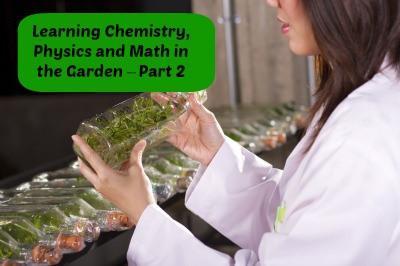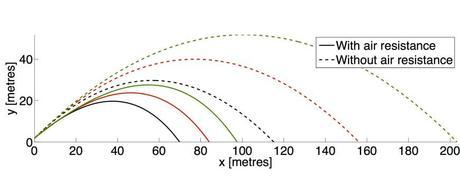 Agriculture is science. If you’re growing something – whether flowers in a pot on the windowsill or vast fields of vegetables – you’ve got a ready-built classroom.
Agriculture is science. If you’re growing something – whether flowers in a pot on the windowsill or vast fields of vegetables – you’ve got a ready-built classroom.
There are some obvious lessons: What does a seed require to sprout? How do plants “eat and drink” from the soil? Which animals are harmful/helpful to plants? Etc. But there are other things that can be learned in the garden as well. A good gardener has a grasp on chemistry, physics and math.
This post is the second in a series of three. If you’d like to read the first to get some ideas on garden chemistry and earth science you can click here. Part three will be available next Friday, April 25. These two are a few of my most favorite because they’re both bound to be extra fun!
Trajectory & force

image source: letterstonature.wordpress.com
We discovered this lesson out of necessity. Rather than one large garden, we have several small garden plots around the yard. There are 2 that can’t be reached by the hose. We needed to figure out how to “shoot” the water further to reach those spaces.
Start by turning on your garden hose, with no attachments on the open end. The water will just sort of fall out. What happens if you make the opening smaller by covering part of it with your thumb? What happens if you angle the hose up or down?
Greatest lesson ever on a hot day!
Simple machines

image source: school-for-champions.com
In gardening you often find you need to move heavy objects. For all of our wonderful modern technology it is still the simple machines that often turn out to be the best tool for the job.
Levers – Stick a long-handled spade deep into the dirt. Have the child sit on the ground and try to move that piece of earth by grasping the handle at the very base. Now do the same thing using the middle and the end of the handle. Discuss why it’s so much easier to lift the soil with the end of the handle.
Wheel and axle - next time you need to move a big bag of mulch ask your child to carry it. When they see how heavy it is, put it in a wheel barrow and have them transport it that way. Point out the simplicity of a single wheel with an axle through the center and note how much easier that makes it to move something.
Other simple machines include the wedge (an axe or log splitter), screws, inclined planes (ramps), and pulleys. As these come into use in your gardening, take the time to show your child what you are using and explain why it makes your task easier. Understanding these basic ideas creates a great foundation for understanding the much wider world of Newtonian physics.
Don’t miss next Friday! We’ll talk about how the garden can help teach some of the trickier parts of math.
If you liked this post, it would mean a great deal to me if you would click this banner to vote for LazyHippieMama as a great homeschool blog. You don’t have to register or anything. One click = one vote. Thank you for being a part of this community!

Are you, too, seeking to save the earth, promote world peace and raise productive citizens without expending too much effort?
Why not follow Lazy Hippie Mama by email, Facebook, Google+, Twitter or Instagram to get all the updates?
If we work on our goals together, they may be a little easier to achieve!

